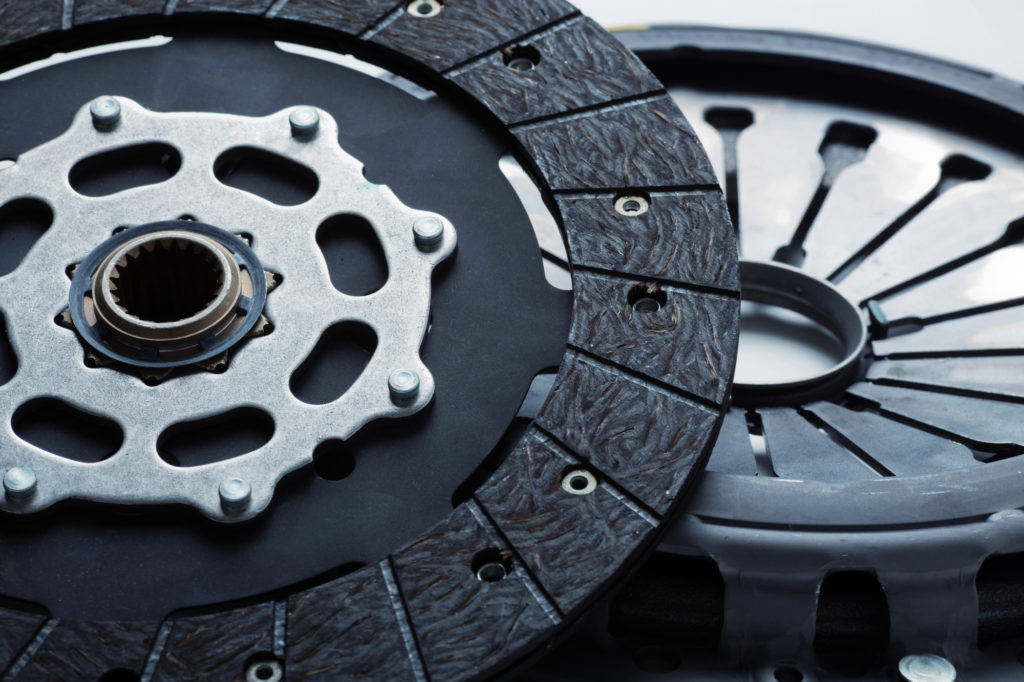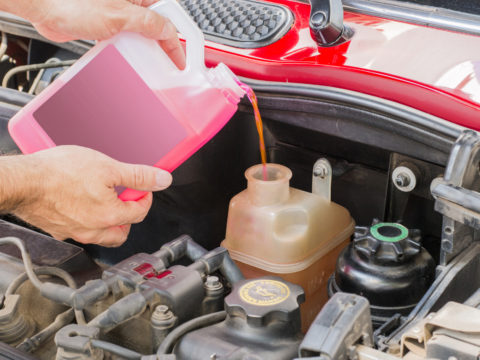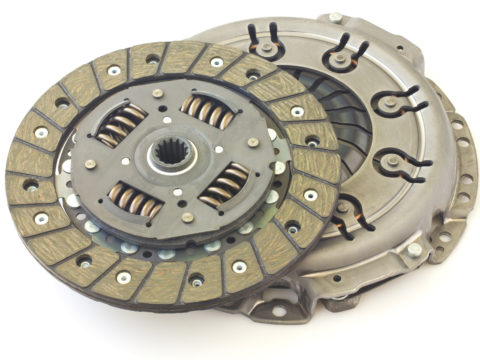Bleeding a clutch is usually a two-person job. But, with a little bit of help, you can learn how to bleed a clutch by yourself. Knowing how to do the process solo can save you time and get you back on the road quicker than having to wait for a friend to come and help.
Let’s look at the basics of bleeding a clutch and how the system works so you have a sound fundamental understanding. Then we’ll show you what tools you need, how to bleed a clutch, and some other things to consider.

Contents
What Does Bleeding a Clutch Mean?
A hydraulic clutch system is part of a vehicle with a manual transmission. This animation does a good job of showing how a clutch interacts with the transmission and the engine to help you control the car. What you can’t see is how hydraulic pressure translates your push of the clutch pedal into the action of the clutch itself.
Here is a quick look at how all of the other parts of the hydraulic system fit together.
Why Do I Have to Bleed My Clutch?
When air becomes trapped inside the hydraulic system, it interferes with the operation of the system. That’s because air is taking up the space that should be occupied by fluid, and the clutch pedal will feel spongy, resulting in unpredictable engagement and disengagement of the clutch itself.
So, to release the air and replace it with fluid, you’ll have to bleed the clutch.
How to Bleed a Clutch By Yourself
Some jobs are just easier with two people. Even though that’s true of bleeding a clutch, it’s also really simple to bleed a clutch by yourself.
Clutch Bleeding Tools
The best tool to have on hand for bleeding a clutch by yourself is a vacuum bleeder. It may seem wasteful to buy a special kit for one particular task, but they are relatively inexpensive. Since many bleeders come in a kit with adapters and tools so that it works on a few different applications, it’s quite economical and practical.
You can also find clutch bleeding kits for rent or purchase at local auto parts stores.
In addition to the vacuum bleeder, you’ll also need some other tools, including:
- Automotive jack
- Jack stands and safety equipment like cribbing
- Receptacle for disposing of the old fluid
- Catch can or drain pan for fluid
- Clear tubing
- Safety gear (gloves, goggles)
- Rags for cleaning up
- Appropriate size crescent wrench or specialized bleeder wrench
- Additional fluid (usually brake fluid, check your owner’s manual)
Five Steps to Bleeding Your Hydraulic Clutch
Before diving into the first step, make sure you understand the whole process of bleeding the clutch from start to finish.
Step 1: Gather Your Tools and Lift the Car
Jack up your car so you can access the clutch. Make sure it’s safely supported with jack stands or wood blocks so that the vehicle won’t shift if the jack fails. Set out all your tools so you know you’re prepared to do the job.
Step 2: Open the Master Cylinder
If you’re just topping off the fluid, you don’t have to drain the system first. Instead, open the top of the master cylinder and attach your vacuum bleeder, following the manufacturer’s directions. Now, pressurize the bleeder kit by pumping it up. Again, follow the directions on the kit to get to the appropriate pressure.
Step 3: Bleed the Clutch
Using an appropriately sized wrench, open the bleed valve on the clutch. This should be pretty easy to do, and opening the valve only a quarter-turn is enough to release the pressure. Place a receptacle under the valve when you open it to catch the fluid that comes out. To make it easier, push a piece of clear tubing onto the bleed valve so that it’s easier to direct it into a receptacle.
Along with the fluid, there will be some air bubbles. Close the valve when the air stops and only fluid is running out.
Step 4: Repressurize and Bleed Again
Go back to your power bleeder and repressurize it. Go and open the bleed valve again. Repeat until there are no longer any bubbles. Once there are no more bubbles, the air has been purged from the system.
Step 5: Clean Up and Test
Release the pressure by following the bleeder kit’s instructions. Usually, that’s done by slowly unscrewing its cap. Then remove the adapter from the top of the master cylinder. Replace the master cylinder cap after making sure you have the right fluid level.
Wipe down any drips, as brake fluid can damage your car’s paint and other surfaces.

Other Ways of Bleeding Your Clutch
If you have a friend to help you, you can perform manual clutch bleeding. Instead of adding pressure to the system with your kit, you just have them step on the clutch pedal.
Clutch Bleeding Problems
Bleeding the clutch is pretty straightforward, so if you are having trouble, slow down and use your head.
For instance, if there’s no pressure in the clutch after bleeding, the most likely cause is that you left a valve open. Just take a look around and see if there’s fluid dripping from the bleed valve. If the hydraulic clutch won’t build pressure, it’s also possible that there isn’t enough fluid in the system. Check the level in the master cylinder.
If the clutch master cylinder is not pumping fluid, it’s probably because some debris got inside of the cylinder when you were topping it off. Use a flashlight and look inside for a clog.
FAQs
Some questions come up all the time when talking about how to bleed a clutch yourself. Let’s answer them quickly, so you don’t have to wonder.
Can you bleed a hydraulic clutch at home by yourself?
Absolutely, you’ll just need a vacuum kit. They’re available to rent or buy at your local auto parts store.
How much does it cost to bleed a clutch?
If you do the work yourself, it can cost only a few dollars. All you need is the bleeder kit and replacement fluid, plus a few tools you probably already have laying around.
How do you bleed a clutch with no pressure?
You can’t. You have to get pressure into the system to bleed the clutch. So, add fluid until you have pressure or you find a leak.
Can you just gravity bleed a clutch by yourself?
You can try. But, gravity alone is not strong enough to draw the fluid all the way through the system, so you’re probably not going to purge all the air successfully.
How do you test the clutch master cylinder?
The best way to test the master cylinder is with a pressure kit. That’s a lot more complicated than simply bleeding the system.
How do you bench bleed a slave cylinder?
Bench bleeding a slave cylinder requires removing it from the car and evacuating all the fluid.
How to bleed the hydraulic clutch of a motorcycle?
The vehicle and the parts look a little bit different, but bleeding the clutch system on a motorcycle follows the same process as on a car.














